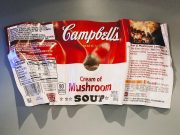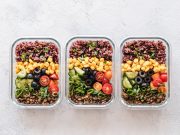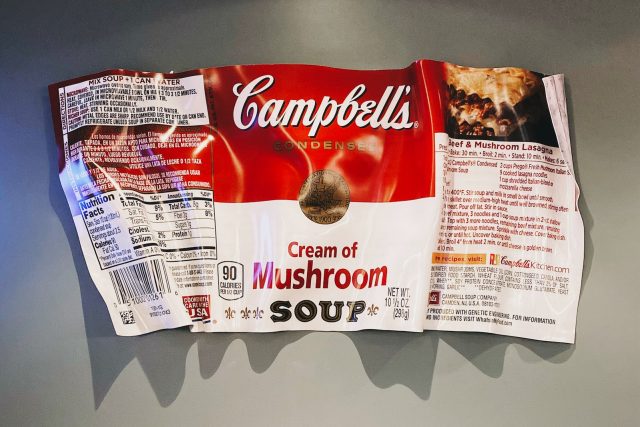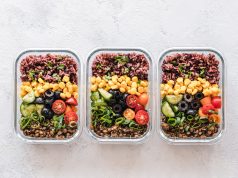Introduction
Hey, our busy lives make it easy to forget about eating healthy. But you know what can help? Reading those little food labels on the back of packages. Seriously, they give us the lowdown on what’s really in our food and help us make smarter choices for our health. And let’s be real, we all want to feel good, right? So, let’s chat about how to decode those labels, why this is so important, and some tips on how to make better choices.
Why understanding food labels is important
Labels on food are super important! They help us figure out what’s in the food we’re eating, like how many calories it has, what kind of nutrients are in it, and if there’s anything in it that we might be allergic to. By reading the labels carefully, we can make better decisions about what we eat and how it affects our health. Plus, we can avoid sneaky things like hidden sugars or unhealthy fats. Knowing this stuff helps us make healthier choices and take charge of our diets.
Statistics on the prevalence of overweight and obesity
The prevalence of overweight and obesity worldwide has become a major concern. Recent studies show that more than 2 billion adults are overweight, with over 700 million classified as obese. These alarming statistics emphasize the importance of adopting healthier lifestyles, including being mindful of the food we eat. One way we can do this is by paying attention to food labels, which can help us make informed decisions about the nutritional value of the products we consume and, ultimately, contribute to lowering the rates of overweight and obesity.
Overview of what will be covered in the article
This article aims to empower you with the tools and knowledge needed to confidently navigate food labels. We’ll provide a breakdown of the essential components, including serving sizes, calorie counts, and macronutrient information, and explain how to interpret them effectively. You’ll also gain insight into the importance of reading ingredient lists and identifying common harmful additives like artificial sweeteners and trans fats. Additionally, we’ll explore various label claims and certifications to help you determine which ones genuinely indicate healthier options.
By the end of this article, you’ll have a comprehensive understanding of how to make informed decisions when selecting nutritious foods, enabling you to take control of your health and well-being. Understanding food labels is crucial for maintaining a balanced lifestyle, and we’re here to guide you every step of the way. Join us as we embark on a journey toward making informed, healthy choices that will positively impact your overall well-being.
Key Information on Food Labels: Serving Size vs. Portion Size
Serving size definition
So, have you ever looked at a food label and felt confused about what it all means? Well, one important thing to understand is serving size. This is basically the recommended amount of food that you’re supposed to eat in one sitting, according to the people who made the product. But here’s the thing: serving sizes can differ from one product to the next and might not actually match up with how much you usually eat in one sitting. Pretty important stuff to keep in mind!
Suggestions for proper measuring
If you’re trying to track your nutrition, ensure you’re measuring your food portions properly. Check the label for the recommended serving size and compare it to what you’re actually eating. That way, you’ll better understand what you’re putting into your body. Here are some easy tips for measuring your food accurately:
- Use measuring cups and spoons: Measuring cups and spoons are invaluable tools for determining serving sizes. They provide standardized measurements and help you gauge how much of a particular food item constitutes one serving.
- Weigh your food: In some cases, weighing your food using a kitchen scale can be more accurate than volume-based measurements. This is especially true for items like meats, grains, and fruits, where weight can vary significantly.
- Be mindful of portion distortion: Portion distortion refers to the tendency to consume larger portions than what is recommended or necessary. By being aware of portion sizes and practicing portion control, you can avoid overeating and maintain a healthier diet.
Portion size versus serving size
It’s good to know that when we read food labels, we should pay attention to both serving and portion sizes. The manufacturer sets the serving size, but the portion size is what we actually decide to eat. It’s important to remember that what we eat may not always match up with the serving size on the label. Visual aids can be helpful in explaining this concept: To better illustrate the concept of serving size versus portion size, visual aids can be incredibly helpful. Consider using examples such as:
- Comparing a recommended serving size of cereal (typically around 1 cup) to the amount you might pour into a bowl without measuring it.
- Contrasting the suggested serving size of snack food, such as chips, to the amount you typically consume from a bag.
- By visually demonstrating these differences, it becomes easier to understand how portion sizes can vary and why paying attention to serving sizes mentioned on food labels is essential.
It’s important to know the difference between serving size and portion size. To get it right, you can check out recommended serving sizes, use measuring cups, and watch out for portion distortion. I find that visual aids can really help too. Trust me, paying attention to serving sizes can make a big difference in making healthier choices and keeping a balanced diet. Hope that helps!
Calories and Nutrients: Understanding Macronutrients, Micronutrients, and the Percent Daily Value

Explanation of macronutrients and micronutrients
It’s important to read food labels as they offer useful insights into the macronutrients and micronutrients contained in a specific food item. Macronutrients, namely carbohydrates, protein, and fat, are the critical elements of our daily diet.
- Carbohydrates: Carbohydrates are the body’s primary source of energy. They include sugars, fibers, and starches. You can find information on total carbohydrates, including dietary fiber and sugars when reading food labels. It is important to differentiate between naturally occurring sugars (such as those found in fruits) and added sugars, which should be consumed in moderation.
- Protein: Protein is crucial for building and repairing body tissues and supporting various metabolic functions. Food labels typically display the amount of protein per serving, helping you gauge your protein intake and make choices that align with your dietary needs.
- Fat: Fat serves as an energy reserve, insulates and protects organs, and aids in absorbing certain vitamins. Food labels usually indicate the total fat content and may also specify the amount of saturated and trans fats. Aim to consume moderate amounts of healthy fats, such as monounsaturated and polyunsaturated fats, while limiting saturated and trans fats.
To stay healthy, you gotta make sure you’re getting all the essential vitamins and minerals your body needs. Not all of ’em are listed on food labels, but the most important ones usually are. It’s key to pay attention to these micronutrients ’cause they help your body run smoothly and keep you feeling good overall.
Explanation of calorie content per serving
Did you know that the energy in your food is measured in calories? You can find this info on food labels which can help you make better choices about how much to eat. Just keep in mind that the calorie count is based on the serving size listed, so if you have more or less than that, you’ll need to adjust the calorie count accordingly.
How to use the percent daily value section
Have you ever noticed the section on food labels that talks about percent daily value (%DV)? It’s actually really helpful in understanding the nutrient content of the food you’re eating. Basically, it tells you how much of a nutrient is in one serving of that food compared to the recommended daily intake levels.
For example, if a food has a %DV of 20% for total fat, that means one serving of that food provides you with 20% of the total fat you should consume in a day (based on a 2,000-calorie diet). Remember, though, that these values may differ for you depending on your caloric needs or dietary restrictions.
Using the %DV section on food labels can actually help you make healthier choices. Try to go for lower %DV values for nutrients like saturated fat, sodium, and added sugars, as these can have negative effects on your health if you consume too much of them. On the other hand, aim for higher %DV values for things like fiber, vitamins, and minerals since these are really important for your overall well-being.
How to Read Food Labels Like a Pro?
Understand Ingredients List
To read food labels like a pro, it’s crucial to understand the ingredients list. Here’s how:
- Start with the First Few Ingredients: The ingredients are listed in descending order by weight, with the highest quantity ingredient listed first. Focus on the first few ingredients, as they make up the majority of the product. Look for whole foods and recognizable ingredients rather than lengthy chemical names.
- Beware of Additives: Many processed foods contain additives that can affect your health. Familiarize yourself with common additives like high-fructose corn syrup, artificial sweeteners, hydrogenated oils, and carrageenan. These additives are often used to enhance flavor, texture, or shelf life but may adversely affect your well-being.
- High-Fructose Corn Syrup: This sweetener, derived from corn, is widely used in processed foods and has been linked to health issues like obesity and an increased risk of chronic diseases.
- Carrageenan: This additive, derived from seaweed, is commonly used as a thickener or stabilizer in dairy products and processed foods. Some studies suggest it may cause digestive issues or inflammation in certain individuals.
- Spot Hidden Sugars: Sugar can appear under different names on food labels, making it easy to miss. Look for terms like sucrose, glucose, fructose, dextrose, maltose, and corn syrup. Be mindful of products with multiple forms of sugar listed, as this indicates a higher sugar content.
- Consider Allergens: If you have food allergies or sensitivities, carefully read the ingredients list for potential allergens. The eight major allergens—peanuts, tree nuts, wheat, soy, eggs, fish, shellfish, and milk—must be clearly disclosed on food labels. Be cautious of cross-contamination warnings as well.
- Watch for Artificial Ingredients: Keep an eye out for artificial colors, flavors, and preservatives. These additives may adversely affect health and are best minimized in your diet.
- Look for Whole Foods: Opt for foods with minimal processing and a short list of recognizable ingredients. Whole foods like fruits, vegetables, lean proteins, and whole grains should make up the bulk of your diet.
It’s a good idea to know what’s in your food. Check out the ingredients list and watch out for any extra additives. When reading the list, keep your personal dietary needs in mind, like any allergies or intolerances. It’s all about making informed choices!
Conclusion & Key Takeaways
Summary of key points discussed in the article:
- Understanding serving size versus portion size: Differentiating between serving size (recommended by the manufacturer) and portion size (amount you actually consume) is essential for accurate nutritional assessment and portion control.
- Knowing macronutrients and micronutrients: Familiarize yourself with macronutrients (carbohydrates, protein, and fat) and micronutrients (vitamins and minerals) listed on food labels to make informed choices that meet your nutritional needs.
- Paying attention to calorie content: The calorie count per serving helps manage energy intake and portion control, supporting weight management and overall health.
- Utilizing the percent daily value (%DV): The %DV section allows you to understand how a serving of a particular food contributes to your overall daily nutritional needs. Use it to make healthier choices by aiming for a lower %DV for nutrients like saturated fat, sodium, and added sugars while seeking a higher %DV for fiber, vitamins, and minerals.
- Reading the ingredients list: Understanding the ingredients list helps identify potential allergens, hidden sugars, additives, and artificial ingredients. Choose whole foods with minimal processing and recognizable ingredients.
Importance of understanding food labels while making grocery decisions:
- Healthier choices: By understanding food labels, you can make informed decisions that promote healthier eating habits. You can select foods that align with your dietary goals, manage portion sizes, and optimize your nutritional intake.
- Allergen avoidance: Reading food labels helps individuals with food allergies or sensitivities identify potential allergens and avoid adverse reactions. It allows for a safer and more enjoyable eating experience.
- Transparency and awareness: Food labels provide transparency about the nutritional content, additives, and ingredients in the products we consume. This empowers us to make conscious choices, be aware of hidden sugars or unhealthy additives, and prioritize whole, unprocessed foods.
- Personalized nutrition: Understanding food labels enables you to tailor your diet to your specific needs, whether it’s managing weight, monitoring macronutrients, or meeting dietary restrictions or preferences.
So, when you’re at the grocery store, it’s super important to read the labels on your food. That way, you can make smarter choices about what you’re eating and start forming healthier habits. Just check out the serving sizes, macronutrients (like carbs, protein, and fat), micronutrients (like vitamins and minerals), calories, %DV section, and the ingredients list. This way, you’ll know exactly what you’re putting in your body, and you can feel good about the choices you make in the store.






























